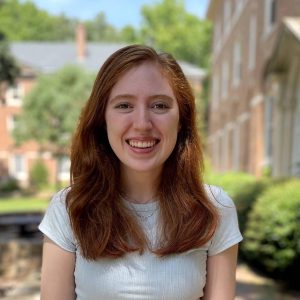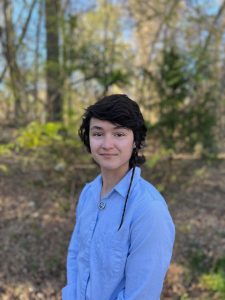NSF just announced their Graduate Research Fellowship Program award winners and we are pleased to announce Madyson Barber and Guadalupe Duran have both received fellowship awards. This five year fellowship includes three years of financial support as well as a cost of education allowance. Madyson and Guadalupe are being recognized for their outstanding research in a STEM discipline.
Madyson Barber works with Andrew Mann in the Young Worlds Lab studying infant (<1 billion years old) stars and exoplanets. Her project focuses on an in-depth search for transiting planets to study the properties of exoplanets (size, orbit, and atmosphere) change over their lifetimes. NASA’s Kepler, K2, and TESS missions have found more than 5000 planets so far, but only around 40 are known to be young. As a result, we remain relatively ignorant of what early conditions give rise to planets like those in the Solar System. Further, young stars present high photometric variability which makes finding such young planets much more challenging. Madyson uses new statistical methods, better handling of instrumental and stellar noise, and better data from the TESS telescope to greatly increase our sensitivity to young planets. In addition to finding a suite of new young planets ideal for follow-up with JWST and other facilities, the search will provide the best set for a statistical comparison between young and old planetary systems and test theories of how planets form and evolve.

Guadalupe Duran’s proposed project with Julieta Gruszko will investigate new techniques for neutrinoless double-beta decay experiments using NuDot, a proof-of-concept liquid scintillator experiment. Neutrinos pose an interesting challenge, for their observed non-zero mass is the only directly observed particle property that goes beyond the Standard Model. This non-zero mass could be explained if neutrinos are Majorana and a rare decay, neutrinoless double-beta decay, is observed. Current experiments are searching for neutrinoless double-beta decay, and future experiments will continue these searches. However, these experimental searches for neutrinoless double beta decay must have large masses of source isotope, which leads to “irreducible” backgrounds. The only way to identify certain backgrounds is by determining the outgoing number of electrons in an event. If the topology of the electron tracks in the liquid scintillator can be reconstructed, these single background electrons can be distinguished from the two electrons emitted from double-beta decay. In detecting and measuring the Cherenkov light and determining its directionality in addition to measuring the isotropic scintillation light generated from the electrons moving within the liquid scintillator, we can identify this single electron background. NuDot, which will be built at TUNL, will demonstrate this Cherenkov/scintillation light separation technique. After upgrades are completed, the inner volume of NuDotwill be filled with liquid scintillator. Using a bet decay source connected to the calibration system, we can point the collimated source anywhere within the allowing us to test NuDot’s Cherenkov/scintillation separation capability. Guadalupe would like to thank the NSF for the opportunity to perform this research, as well as everyone who supported her in applying for this fellowship.


